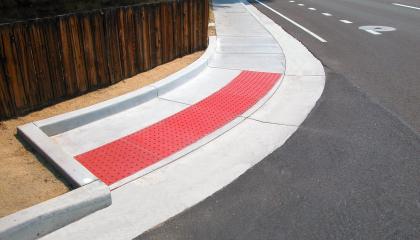At StrongGo, we aim to enhance urban accessibility with high-performance tactile warning surface indicators (TWSIs
When designing tactile warning systems, one often overlooked yet critical aspect is color contrast. Color contrast plays a significant role in ensuring the effectiveness and accessibility of these systems for individuals with visual impairments. By strategically incorporating contrasting colors, we can greatly enhance the usability and safety of tactile warning systems.
Walking surfaces are an integral part of our built environment. They serve as the foundation for how we move around daily, and their design directly impacts our safety and comfort. To think about the future of these surfaces, we must go back to the past.
There are detectable warning surfaces everywhere, including the base of every ramp leading to the street and at the corner of every intersection. Even though individuals frequently walk over these surfaces without giving them much thought, they play a crucial role in many people's lives, including those with limited or no vision.
Why do sidewalks have raised, colorful domes on sidewalk ramps? Why do airports have raised strips on walkways? Most people move throughout public spaces without understanding the purpose of these tactile surfaces underneath their feet. Yet, for specific people in our society, these tactile surfaces are the difference between independence and dependence.
The purpose of detectable warning tile systems is to protect pedestrians of all abilities from hazards such as vehicular traffic and mass transit. According to the standards released by the Americans with Disabilities Act (ADA) and the Architectural Barriers Act (ABA), most public spaces are expected and required to equip detectable warning dome tiles.
While the quality and durability of the detectable warning dome tiles are absolutely vital, they are only as good as their installation process. Let’s talk about installation processes.
Installation is when two or more materials are adhered together to form a strong bond. In this case, we have the detectable warning dome tiles that will be bonded to the substrate, the underlying substance or layer, with an adhesive. All the materials might be of the highest quality, but if the installation process is poor, then the integrity of the other materials will be compromised.
Tactile paving, now known as detectable warning dome tiles, was first developed by Seiichi Miyake in 1965 to help people with vision impairments navigate public spaces. Major cities and transportation networks throughout the world use detectable warning dome tiles.
Connect with us
We pride ourselves on our customer service, and we'd love to hear from you! Sign up for our newsletter to keep up with industry updates and trends, as well as any new product releases.










